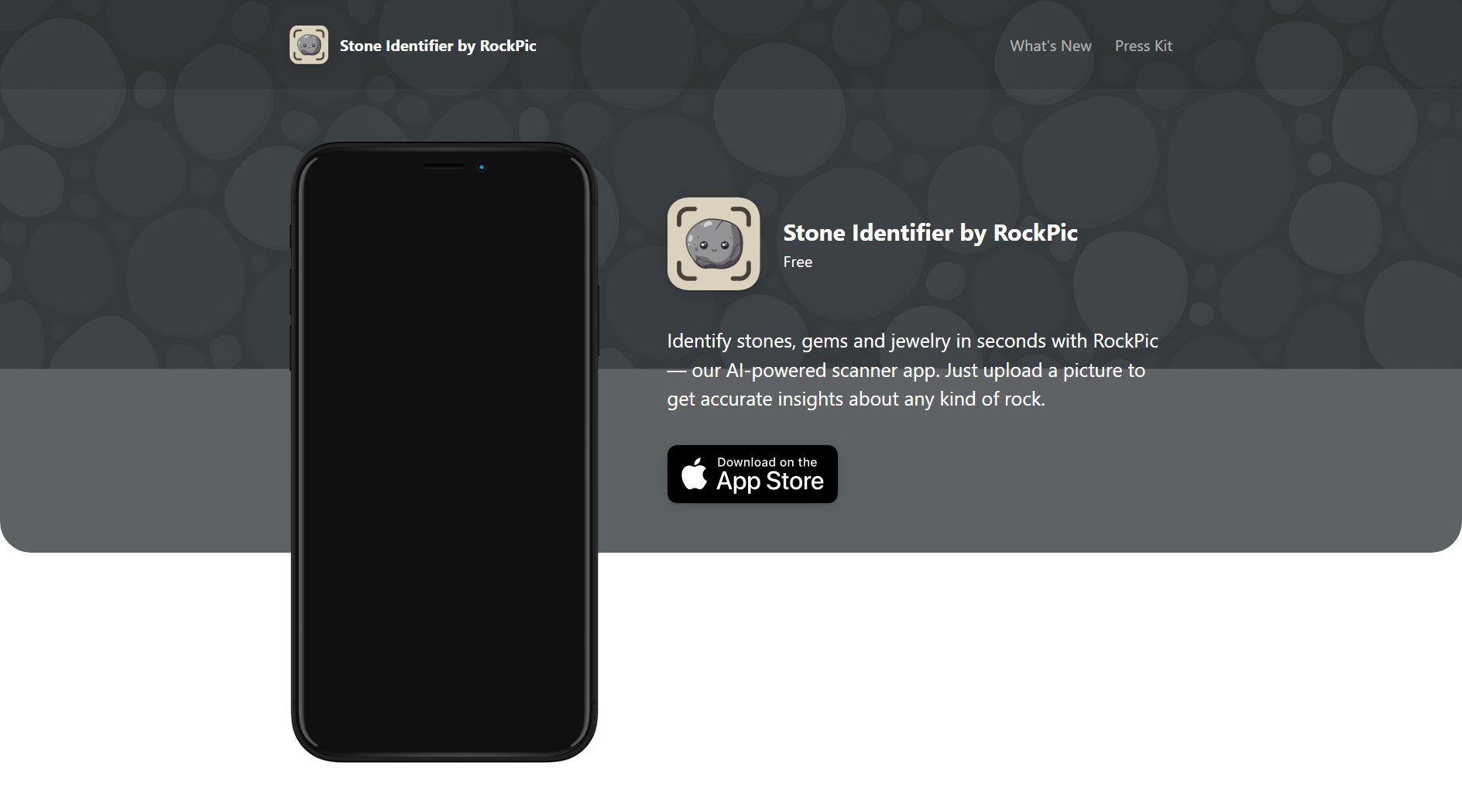Rock Identifier App
AI-powered scanner for stones, gems, and jewelry on iOS & macOS
What is Rock Identifier App? Complete Overview
The Rock Identifier App, also known as RockPic, is an AI-powered scanner designed to identify stones, gems, and jewelry within seconds. By simply uploading a picture, users can receive accurate insights about any kind of rock. The app caters to rock enthusiasts, jewelers, geologists, and collectors, providing detailed information about rarity, magnetism, composition, origin, and alternative names. It also helps users organize their personal rock collections. The app supports a wide range of materials, including diamonds, crystals, fossils, minerals, and other precious stones.
Rock Identifier App Interface & Screenshots

Rock Identifier App Official screenshot of the tool interface
What Can Rock Identifier App Do? Key Features
AI Rock Scanner
The app uses advanced AI technology to quickly identify stones, gems, and jewelry. Users can take a picture or upload an image from their photo library, and the scanner will provide accurate verification of the stone.
Rarity & Magnetism
The app determines the rarity of the stone and checks for magnetic properties, providing users with valuable insights into the uniqueness and characteristics of their finds.
Composition & Origin
Users can learn about the chemical makeup, formation process, and historical background of the rocks they identify, enhancing their understanding of geological specimens.
Alternative Names & Uses
The app provides information on other names for the stone and its common applications in jewelry, construction, and other industries, making it a versatile tool for various users.
Organize Your Collection
The app allows users to build and manage their personal rock collections, tracking discoveries and organizing them for easy reference and study.
All-in-One Gem & Fossil Identifier
The app supports identification of a wide range of materials, including diamonds, crystals, fossils, minerals, and other precious stones, making it a comprehensive tool for rock enthusiasts.
Best Rock Identifier App Use Cases & Applications
Jewelry Identification
Jewelers and collectors can use the app to quickly identify gemstones and verify their authenticity, ensuring accurate appraisals and valuations.
Educational Tool
Students and educators can utilize the app to learn about different rocks, their compositions, and origins, enhancing geological studies and field research.
Rock Collecting
Enthusiasts can organize and track their rock collections, identifying new finds and learning about their unique properties and uses.
Construction Material Analysis
Professionals in construction and landscaping can identify stones and minerals, ensuring the right materials are used for specific projects.
How to Use Rock Identifier App: Step-by-Step Guide
Download and install the Rock Identifier App from the App Store on your iOS or macOS device.
Open the app and choose to either take a new picture of the rock or upload an existing image from your photo library.
Wait for the AI-powered scanner to analyze the image and provide identification results.
Review the detailed insights about the rock, including rarity, magnetism, composition, origin, and alternative names.
Save the identified rock to your personal collection for future reference and organization.
Rock Identifier App Pros and Cons: Honest Review
Pros
Considerations
Is Rock Identifier App Worth It? FAQ & Reviews
The app is available for iOS and macOS devices, allowing users to identify rocks on their iPhones, iPads, and Mac computers.
An internet connection is required for the AI-powered scanner to analyze and identify rocks accurately.
The app supports a wide range of materials, including diamonds, crystals, fossils, minerals, and other precious stones, but may not identify extremely rare or obscure specimens.
The app allows users to identify and save an unlimited number of rocks in their personal collection.
The app uses advanced AI technology to provide highly accurate identifications, though results may vary depending on the quality of the image and the rarity of the specimen.








